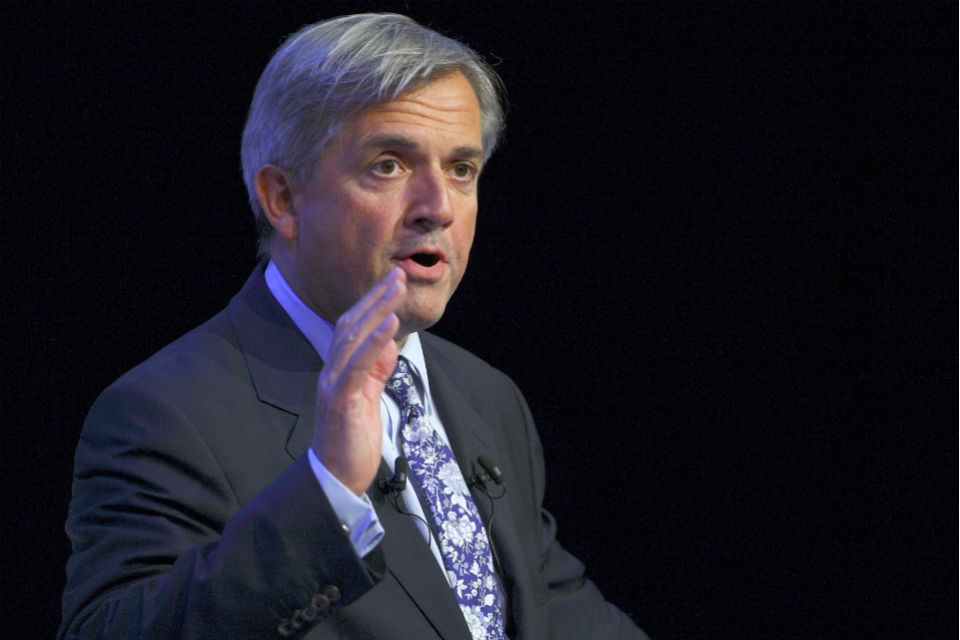The Rt Hon Chris Huhne MP speech: Pylon Design Competition Shortlisting event
Introduction Thanks very much. I’m delighted to be here today, at the world’s greatest museum of art and design. I’m told there are four and…

Introduction
Thanks very much. I’m delighted to be here today, at the world’s greatest museum of art and design.
I’m told there are four and a half million items in the V&A’s collection. At one per minute, it would take eight and a half years to see them all.
Today, we are here to look at just six: the finalists for the Pylon Design Competition.
Design
It was the French emigre Ernest Dimnet who said that ‘architecture, of all the arts, is the one that acts the most slowly, but the most surely, on the soul’.
To judge from the kind of letters that I get, when it comes to pylons, ‘slowly’ is something of an understatement.
Like all classics, the great British pylon is both loved and loathed.
If good design is as little design as possible, then there are a fair few people who would prefer it if pylons were never designed at all.
Competition
One of the finalists before us today could change that. This exhibition features six designs for a new pylon, chosen from a field of hundreds. The winning design will be seriously considered for future use by National Grid.
I want to take a moment to thank everyone involved in getting this far: National Grid. The Royal Institute of British Architects. The V&A. Everyone at DECC.
But in particular, I want to thank the architects, designers, and students who submitted their entries.
I think it is probably best that politicians are kept away from aesthetic judgements, but I am assured that the standard and quality of submissions was excellent.
Everyone who entered the competition - indeed, everyone who takes even a moment to consider the finalists - is engaged with one of the thorniest problems of our age.
Energy
Ours is a society defined by energy.
It seems scarcely credible that, just eighty years ago, only one in five households in Britain had electricity.
Access to safe, stable and affordable power is one of the hallmarks of modernity. It is an essential precursor to economic growth and human development.
Steady illumination, mass transport, modern science, the internet… All these things, and so much more, depend on reliable and universal energy.
Yet it remains curiously remote.
We flick a switch, and the lights come on. Perhaps a fuse blows occasionally, or a circuit breaker goes.
But for most people, energy starts with the switch and ends when the bill arrives.
Attitude
That has to change. We need to start thinking - and talking - about what energy means to us. About how we use it, how we can save it - and what we’re willing to trade off to keep it flowing.
For the electrification of Britain is not yet complete.
Demand for electricity could double over the next forty years, as we turn our backs on internal combustion engines and gas boilers. Clean, green electricity will power our cars and heat our homes.
In the next nine years alone, we need the equivalent of twenty new power stations: from renewable energy to new nuclear, cleaner coal and gas. And each must be connected to the grid.
By 2050, we need the equivalent of 50 new nuclear power stations, or 20,000 onshore wind turbines. Just think for a minute about the number of substations, pylons and power lines needed to plug them all into the grid.
Changes
Change on that kind of scale will not go unnoticed - and nor should it. We must own our energy future together.
That’s what this competition is all about.
We want people to engage with the coming energy transformation. With the reality of our future energy needs, and the kind of decisions we have to face to meet them.
We cannot escape trade-offs. Because every energy resource has its plus points - and its drawbacks.
Today, the National Grid has signalled its commitment to this principle. Wherever possible, they will explore alternatives to new overhead power lines.
Whether you wish to see electricity carried above ground by pylons or buried within the earth in cables, there are environmental - and economic - consequences.
I believe that the way that we deliver energy should be as beautiful as it can possibly be.
And the finalists on display here today prove that I am not alone.
These designs give us a glimpse of a new energy future. The precise destination is still unknown; but we are now beginning to see how we might get there.
Over the next few weeks, the competition website will be open for comments - and those comments will be taken into account by the judging panel. So have a look, then have your say. But please - don’t send me any more letters.
Thank you very much.